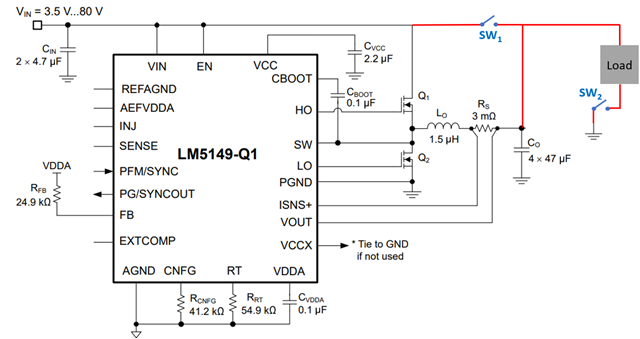Other Parts Discussed in Thread: LM5149
Tool/software:
Hi team,
My customers now are trying to use LM5149-Q1 as TEC controller with a bidirectional current by adding a switch between Vin and Vout and another switch between load and GND. By turning on and off in order to achieve the bidirectional current. The question is when there is a negative/sink current (I- as in the figure), what would the device LM5149 act and is that acceptable for the LM5149 in condition of stability and feasibility?

BR,
Manu





